Multiflora chrysanthemum, blooming in the autumn, when there are fewer other flowers, can decorate any garden with elegant lush bushes and please with a variety of varieties. The ideal spherical shape of the plant and a rich palette of colors allow you to create picturesque compositions. Caring for a chrysanthemum is not difficult, but requires compliance with certain rules.
Material Content:
Chrysanthemum multiflora: varieties
Multiflora chrysanthemums are a whole group of plants, which includes various varieties. All of them are suitable for outdoor cultivation. Varieties are divided into large-flowered and small-flowered. When they are combined, the design of the garden looks especially impressive.
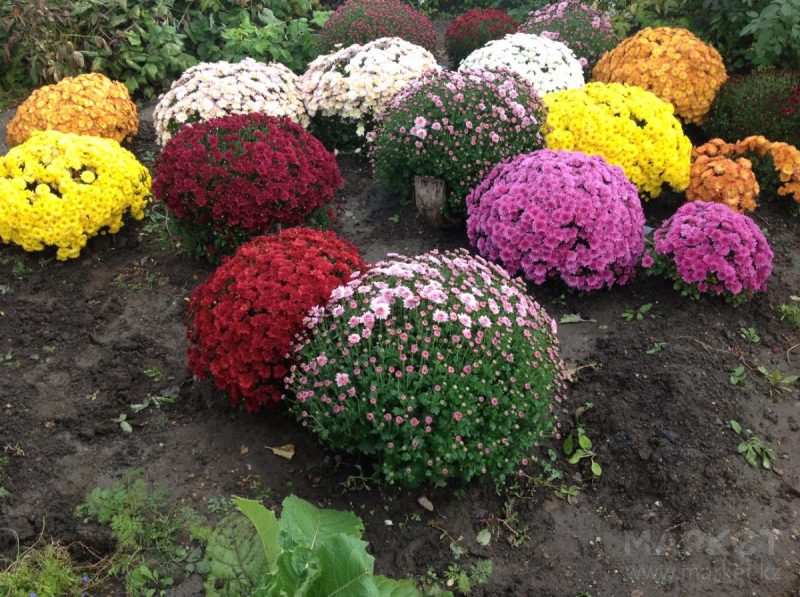
The main varieties of this chrysanthemum are as follows:
- Branfountain Lemon. The height of the bush is about half a meter. The flowers have a gently lemon color with a richer palette in the middle.
- Bransky Plum. Bushes up to 70 cm with rich pink flowers with a raspberry core.
- Branroyal Yellow. At the peak of flowering, the leaves are completely hidden under large yellow flowers resembling a ball.
- Branbeach Orange. Flowering of bushes begins earlier than in other varieties - from mid-August. Saturated orange flowers are densely arranged on the stems of the bush, covering the leaves.
- Brandove White. Flowers resembling pompons have a two-tone color: the middle is yellow-green, and the edges are white.
- Branchili. Low bushes with red not large flowers.
Plants winter well, but require shelter. In the northern regions, flowers are dug up for the winter and stored in a basement in a pot with peat.
Chrysanthemum of multiflora: nuances of cultivation
The plant is unpretentious and easy to care for. At the same time, due to the fact that it is necessary to know some features of chrysanthemums and take them into account when growing, an ignorant grower, ignoring them, risks losing the plant.

The main requirement is the shelter of flowers even in the south, if the winter is not snowy, and the temperature drops to -15 and lower by more than 2-3 days per season.
It should also be borne in mind that chrysanthemum cannot be planted near fences and walls, due to the fact that the fence violates the equivalent lighting, which does not allow the plant to form a regular spherical bush.
Outdoor landing
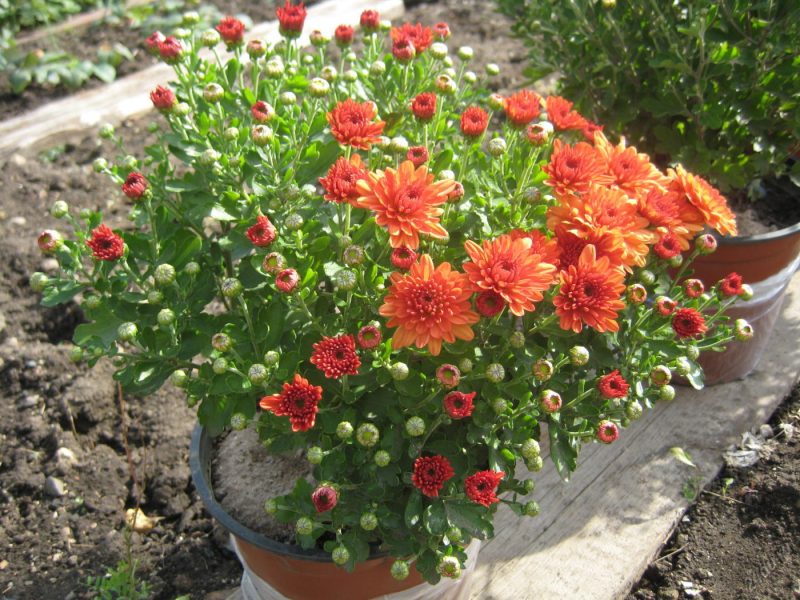
Only proper planting in the open ground ensures good growth of chrysanthemum and its rapid flowering in autumn. Mistakes can cause a plant to simply not bloom.
Soil preparation and location
The chrysanthemum needs intensive lighting, and therefore it should be planted in a sunny area, which even in the evening hours is not obscured. If the flower does not have enough light, then the spherical shape of the bush can not be obtained. It will fall apart.
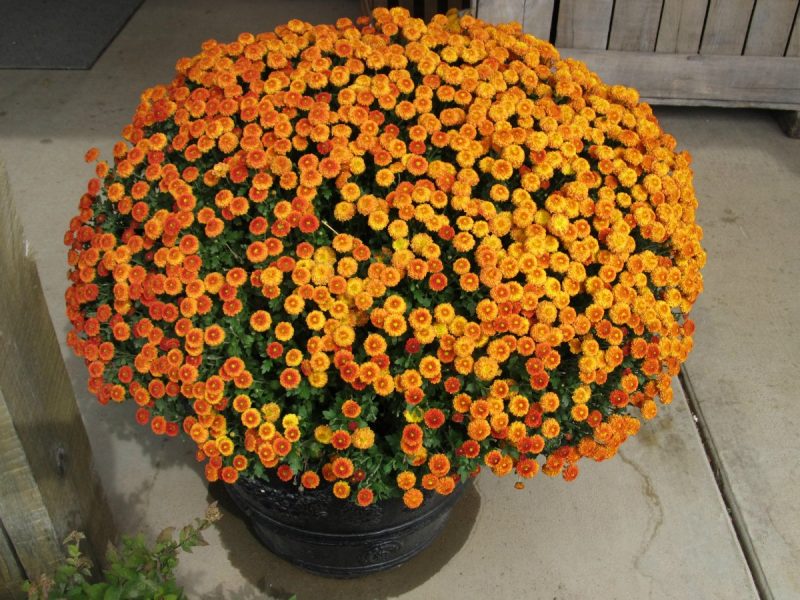
Soil for chrysanthemum needs moisture permeable, as the bushes require a large amount of water. It should also be light and nutritious. The optimal composition is peat mixed with turf soil and sand in equal amounts. Such a mixture needs to fill the hole in which the plant will be planted. Clean peat is unacceptable, as it dries too quickly.
How and when to plant?
In the middle lane, bushes are planted in open ground in the first days of May. In the south, the planting period is shifted by a month, and chrysanthemum is planted in early April. In the northern regions, the plant should be planted in a spacious pot, since in winter it will have to be taken from the street for storage in the basement. You need to take out the chrysanthemum from the middle of May.
When planting bushes in open ground, you must strictly observe the distance. You can not plant them closer than 40 cm from each other.
Before planting, the pit is filled with a soil composition to which a complex fertilizer of long duration is added. Then it is necessary to pour 3 liters of water into it. After that, chrysanthemum is planted, carefully spreading its roots. They must not be tucked in. Deepen the plant into the soil to the first leaves. 2-3 weeks after planting, these leaves will die, which is considered the norm.
When growing multiflora chrysanthemums in a pot, the same soil composition is used as for filling holes. You can also apply ready-made soil for flowering ornamental plants.
The first days after planting, the flowers need high humidity, and for this they need to be covered with a glass or plastic cap.
Read also:potted chrysanthemum: home care
Chrysanthemum multiflora: care
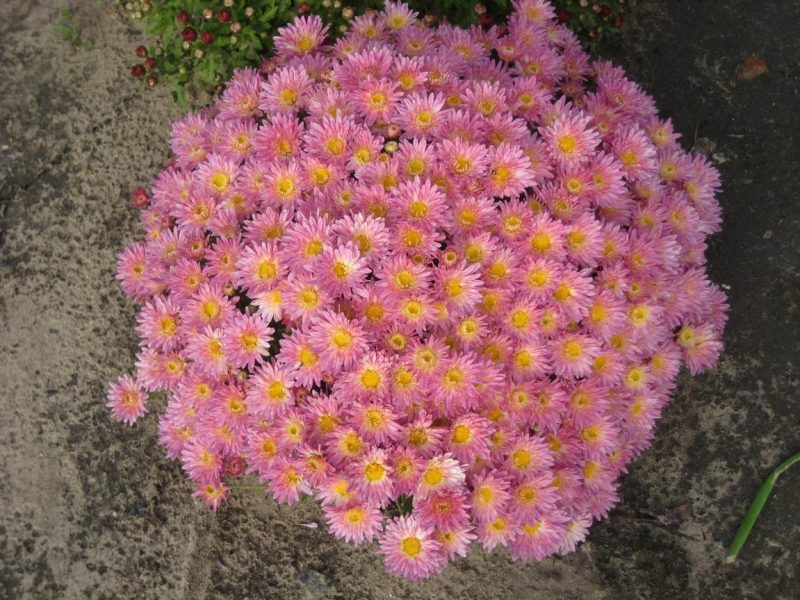
In addition to proper planting, it is necessary to provide chrysanthemum and quality care. The unpretentiousness of the plant does not mean that it can do without care at all.
It is interesting:potted chrysanthemum
Watering a plant
The flower is distinguished by special moisture lovingness, therefore, regular and abundant watering is the key to the proper development of the plant. Even if the chrysanthemum is overdried for a short time, this will negatively affect its growth.
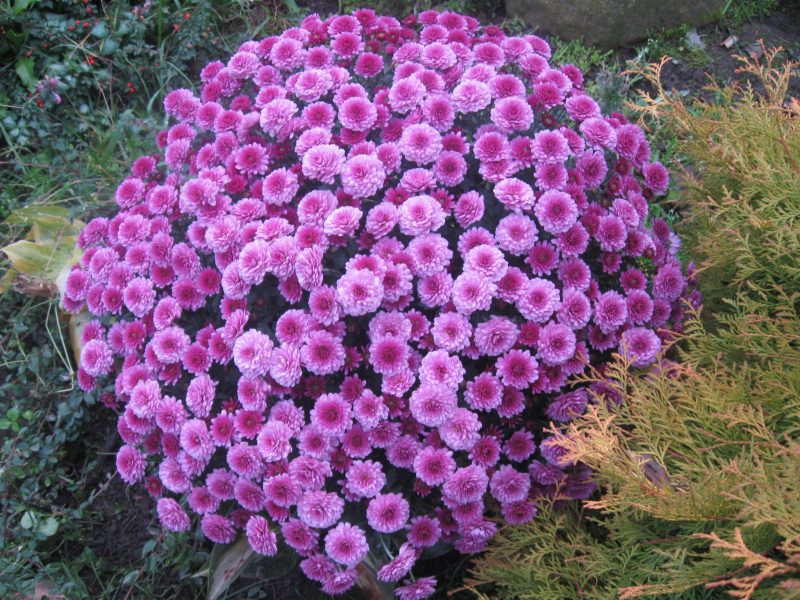
The intervals between watering depend on the weather. In the heat, in the absence of rain, chrysanthemums are watered daily: early in the morning or late in the evening, so that the leaves do not form burns due to sunlight.
In rainy weather, watering the flowers is not required if the soil gets wet to a depth of 5 centimeters or more. If moisture is present at a shallower depth, it is necessary to abundantly moisten the soil around the plant.
Fertilizer and fertilizer
If you do not feed the plants, then they will turn yellow and will not give abundant flowering. The first top dressing is carried out with nitrogen fertilizer 20 days after planting. The second top dressing is necessary at the stage of budding, and a potassium-phosphorus composition is used for it. You can also apply a solution of bird droppings in water, prepared in a ratio of 1:20, to the second top dressing.
All dressings should be carried out only under the root. If fertilizers are on the leaves, rinse them immediately with clean water.
Care after flowering
After the plants bloom, which occurs in late October - early November, it is necessary to cut off the aboveground part, leaving only 10 cm of the stem above the ground. Without this pruning in the spring will not be formed enough new shoots that provide an attractive appearance of the bush.
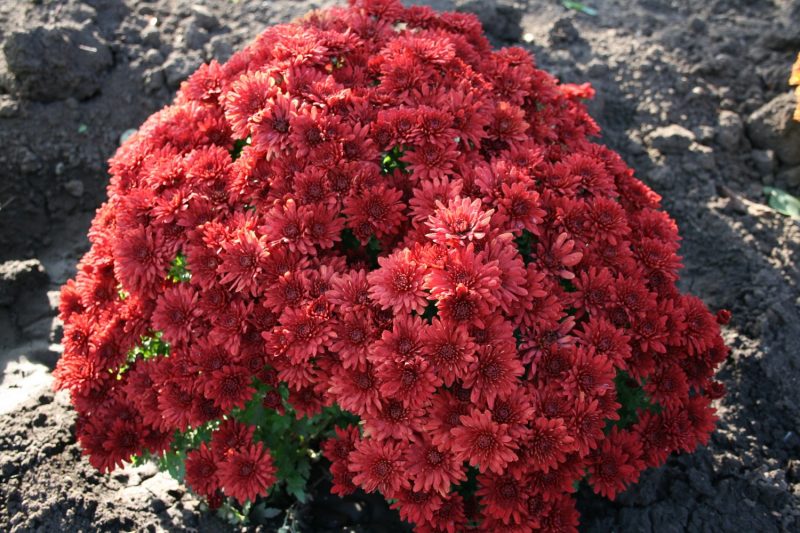
Since chrysanthemums are often affected by powdery mildew in the fall, after pruning, it is necessary to spray the left petioles with a composition containing copper.
For the winter, plants need to be covered with coniferous spruce branches and then covered with humus. This will be enough so that the bush does not freeze, and also does not dry out.
Transfer

A plant needs a transplant in a pot if it is planned to put the flower for storage in the basement for the winter. Such wintering of chrysanthemums requires regular monitoring of soil moisture so that it does not dry out. They dig a flower after cutting off the aerial part. Do not shake the earthen lump from the roots, as this will lead to injury.
Propagation of spherical chrysanthemum
It is easiest to breed chrysanthemum by dividing the root. For this purpose, an adult plant is dug out of the ground and a shoot with part of the root is carefully separated from it. After that, the bush again sits in its place. The division should be carried out only in April.
It is also possible to breed chrysanthemum multiflora and cuttings. To do this, the bush, from which it is planned to take material for propagation, is brought into heat in March. He also needs intensive lighting and daylight hours of at least 14 hours. After the shoots grow to 10-15 cm, they are cut and planted in wet sand. For rooting, greenhouse conditions are required, and therefore it is necessary to cover the cuttings with banks. If everything goes well, then in the fall it will be possible to get high-quality bushes of the correct spherical shape.
Plant diseases and pests
In addition to powdery mildew, which appears in the fall, the multiflora chrysanthemum is practically not sick. To a greater extent, the plant is disturbed by pests.
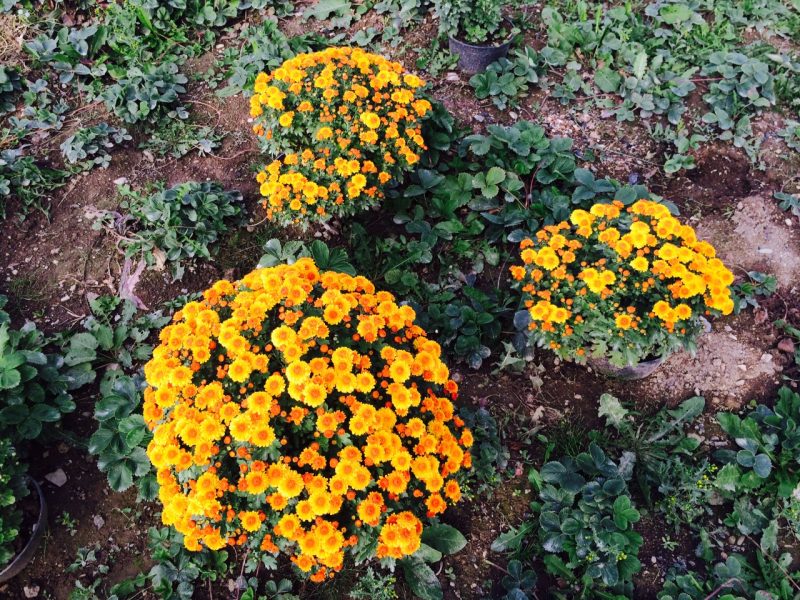
Most often, chrysanthemum is attacked:
- caterpillars - are removed mechanically or by spraying the bushes with a solution of laundry soap and wood ash. Perhaps the use of "spark";
- aphid - is destroyed using metronidazole tablets (1 tablet per glass of water) or laundry soap dissolved in water;
- spider mite - to get rid of it is enough just to water the plants daily so that all its leaves get wet well.
The spherical chrysanthemum of multiflora will present a variety of colors to the autumn garden and luxuriously complete the garden season.












